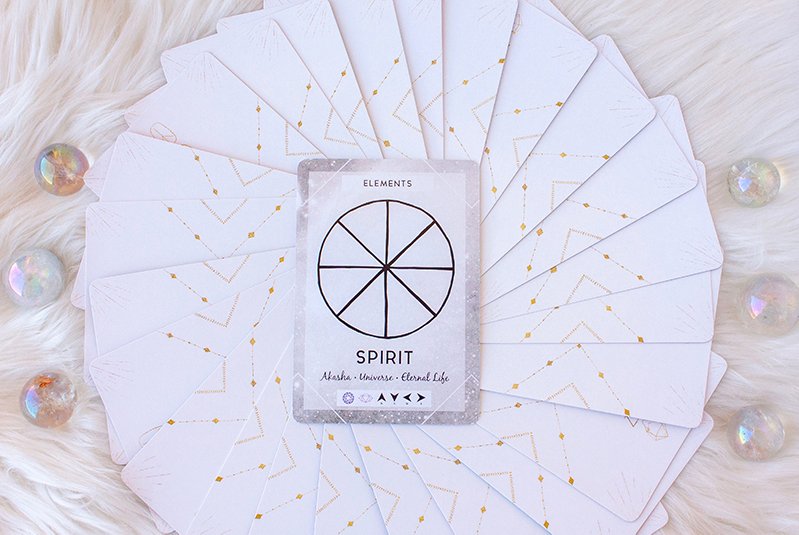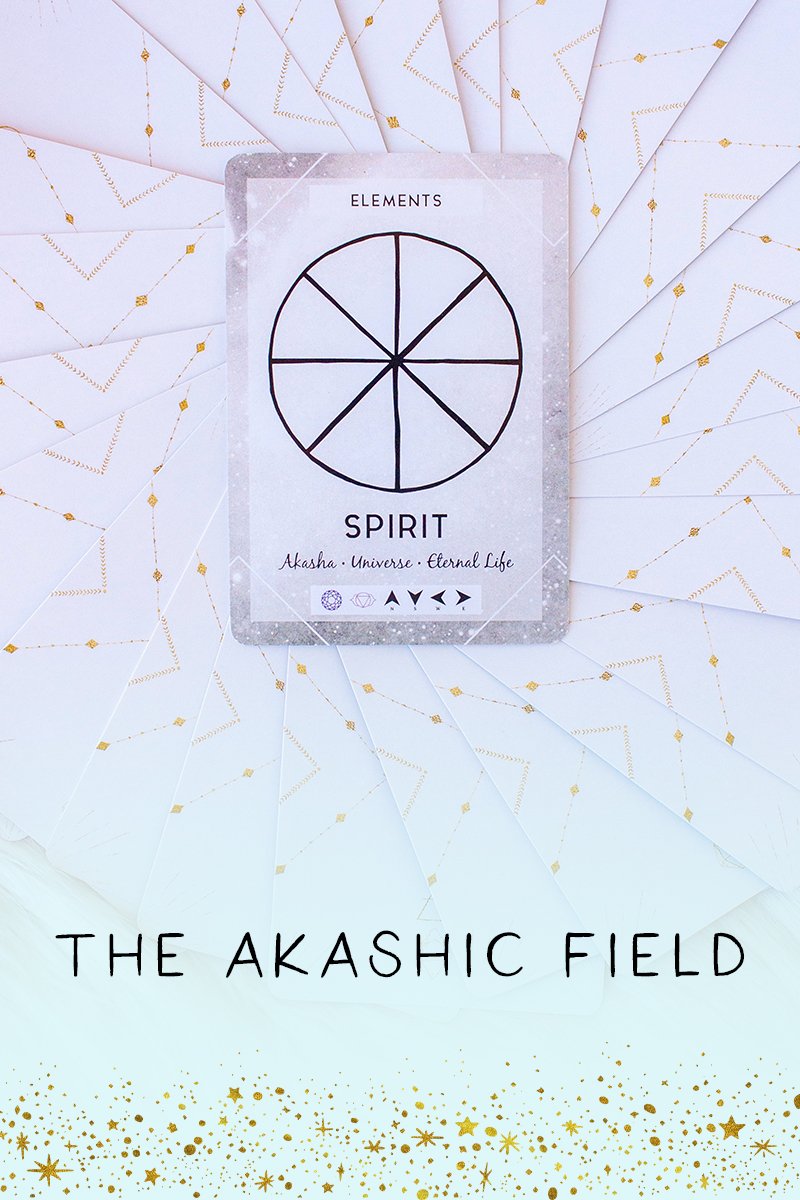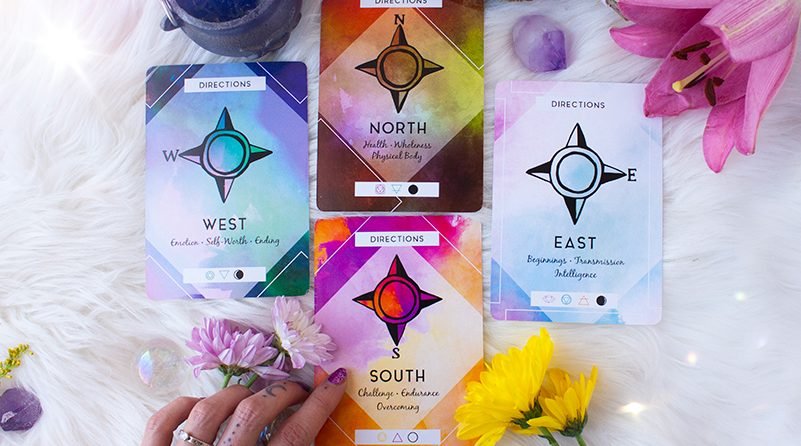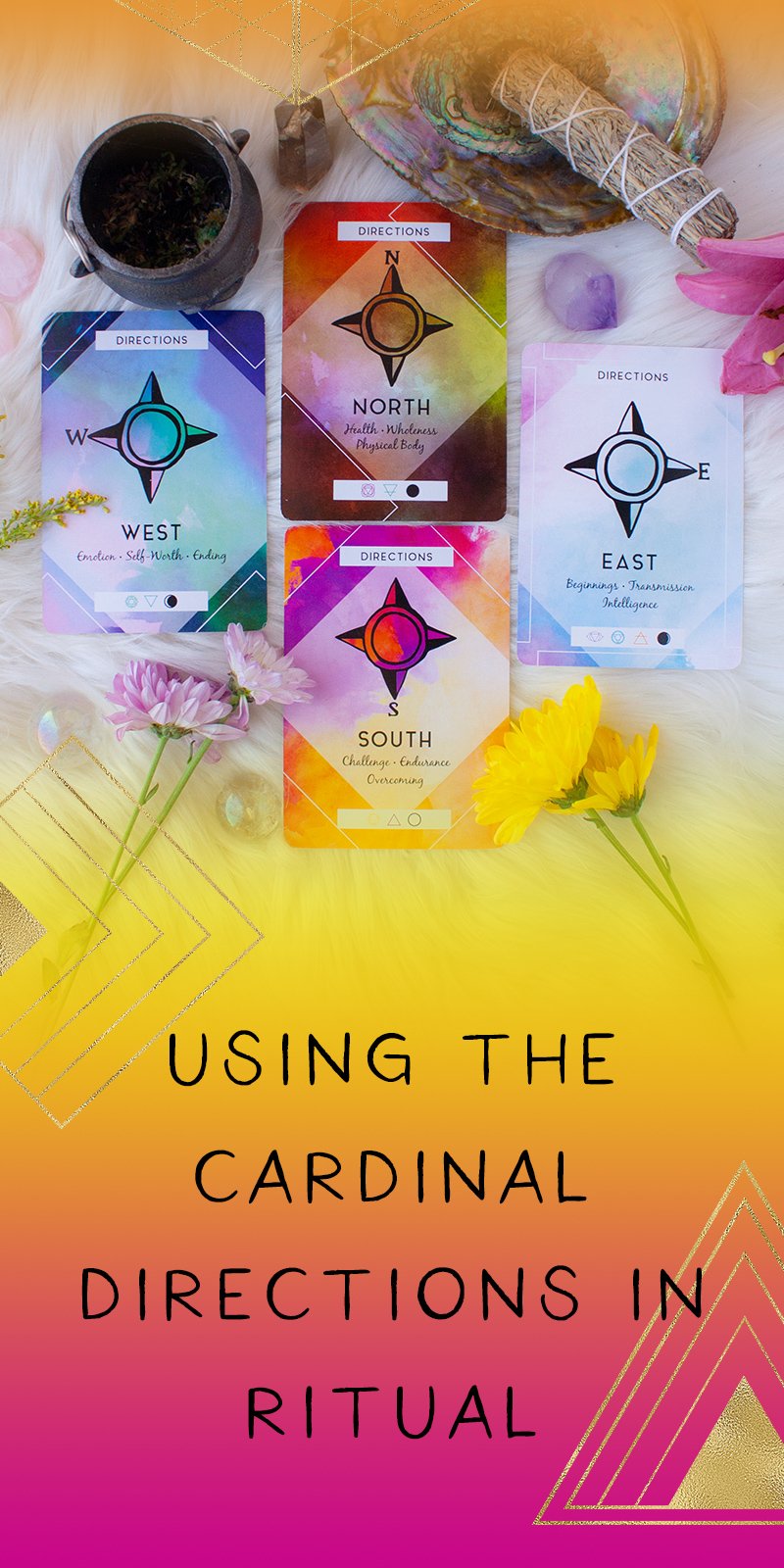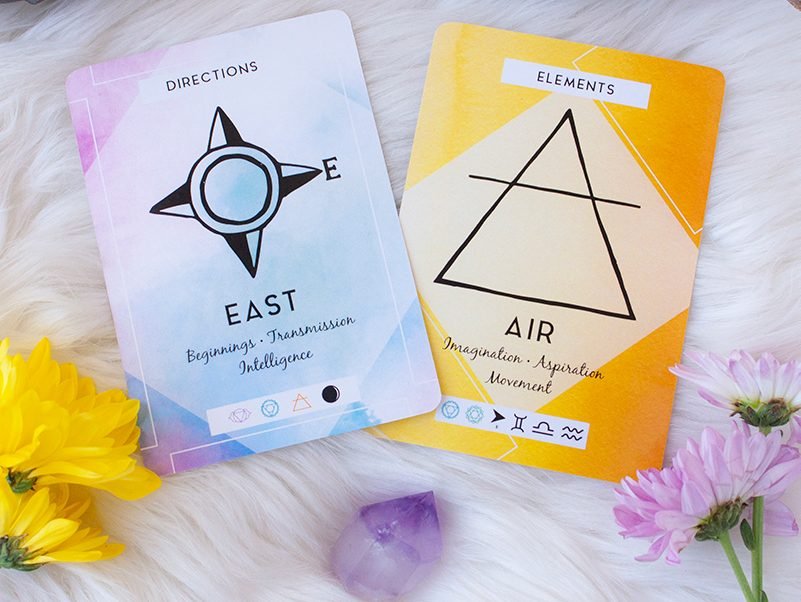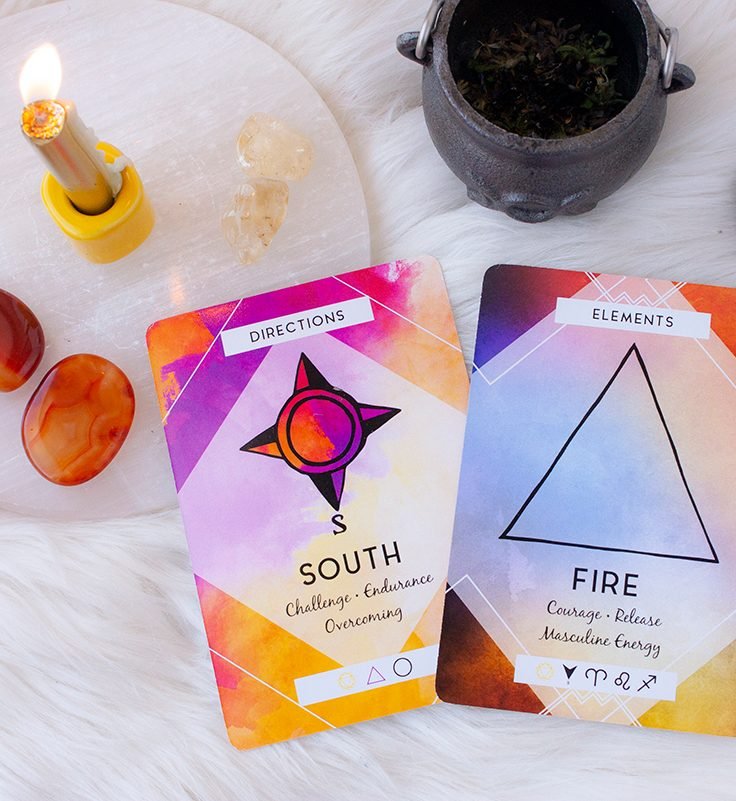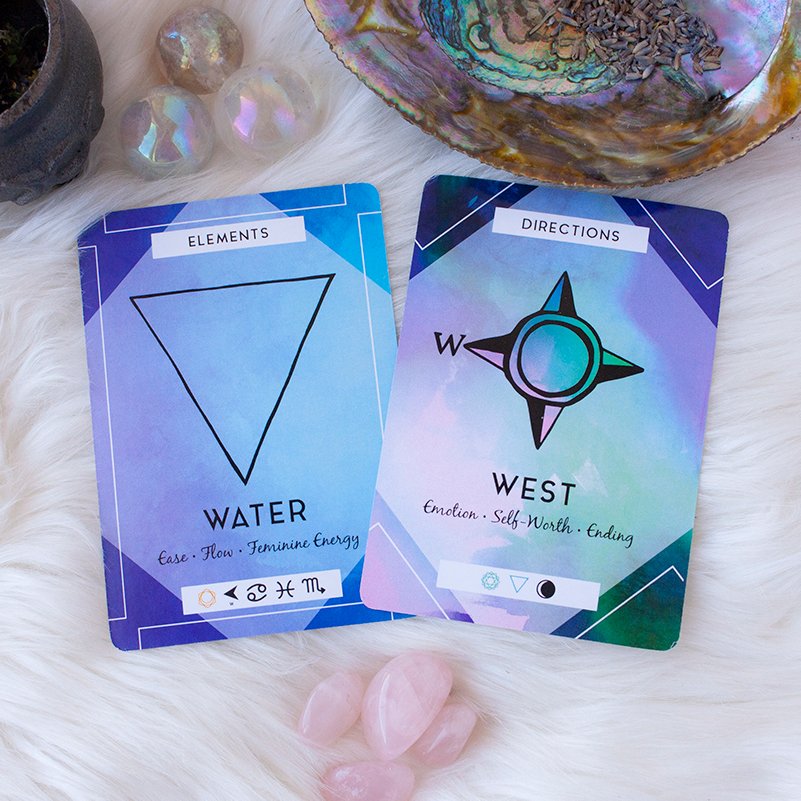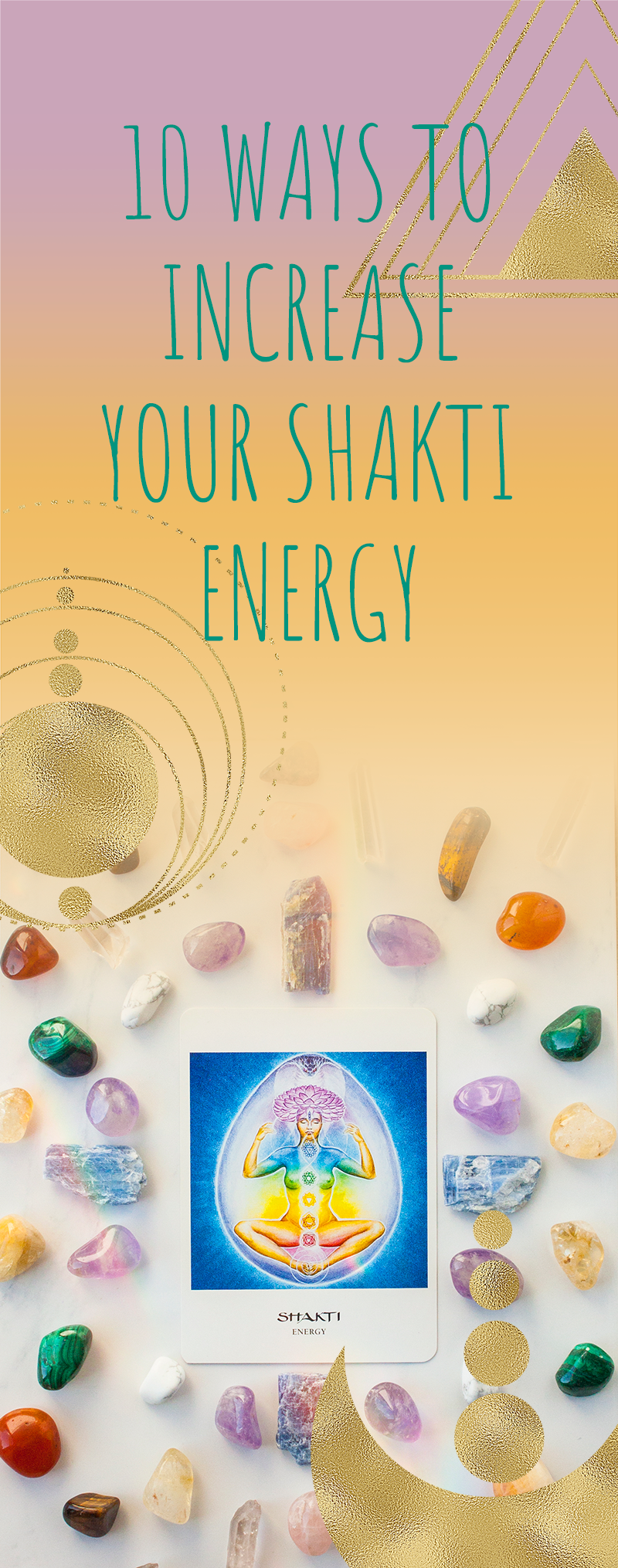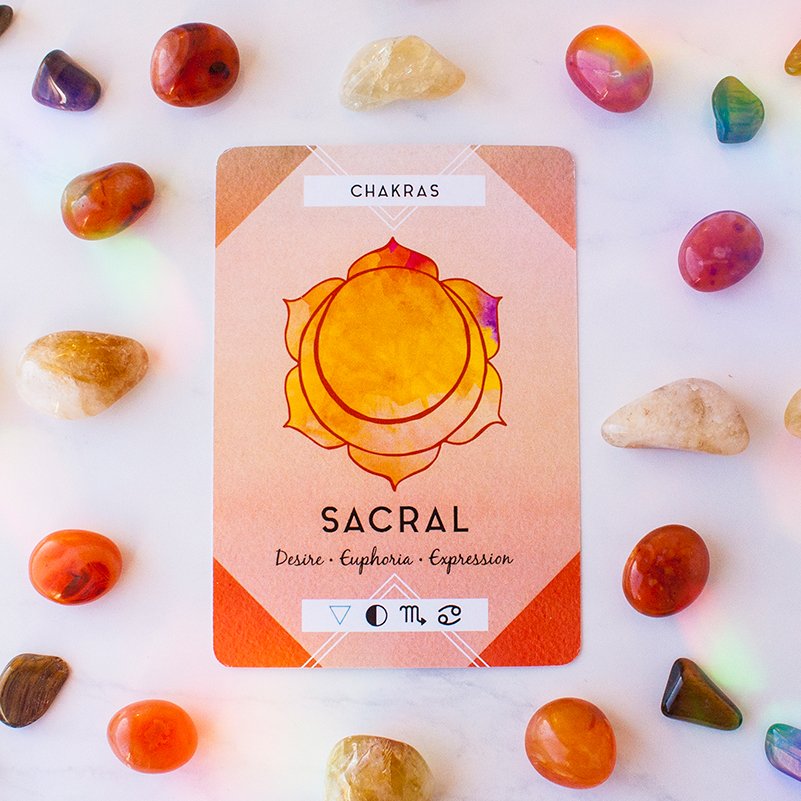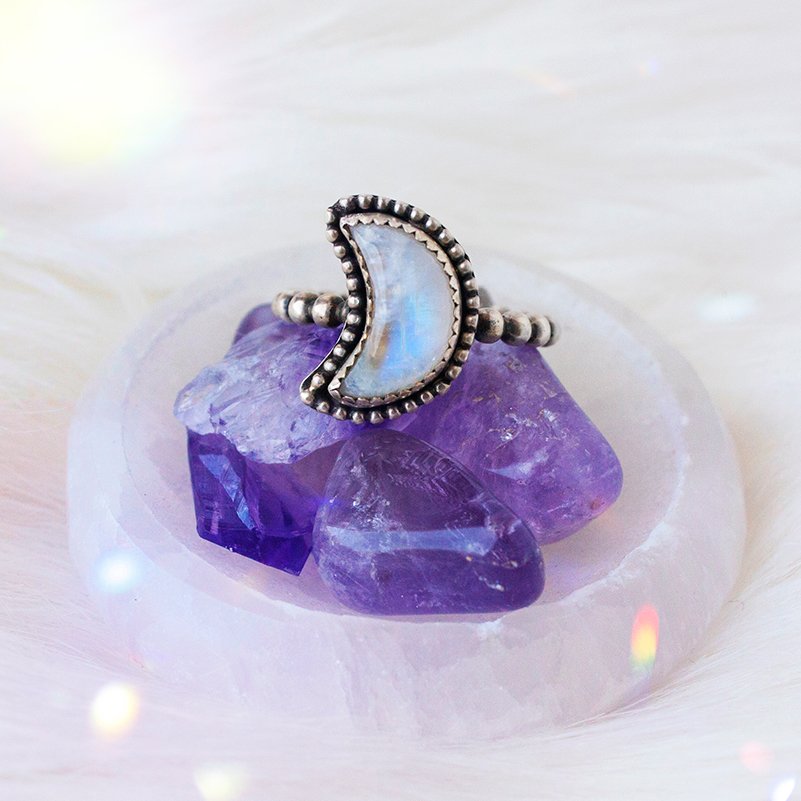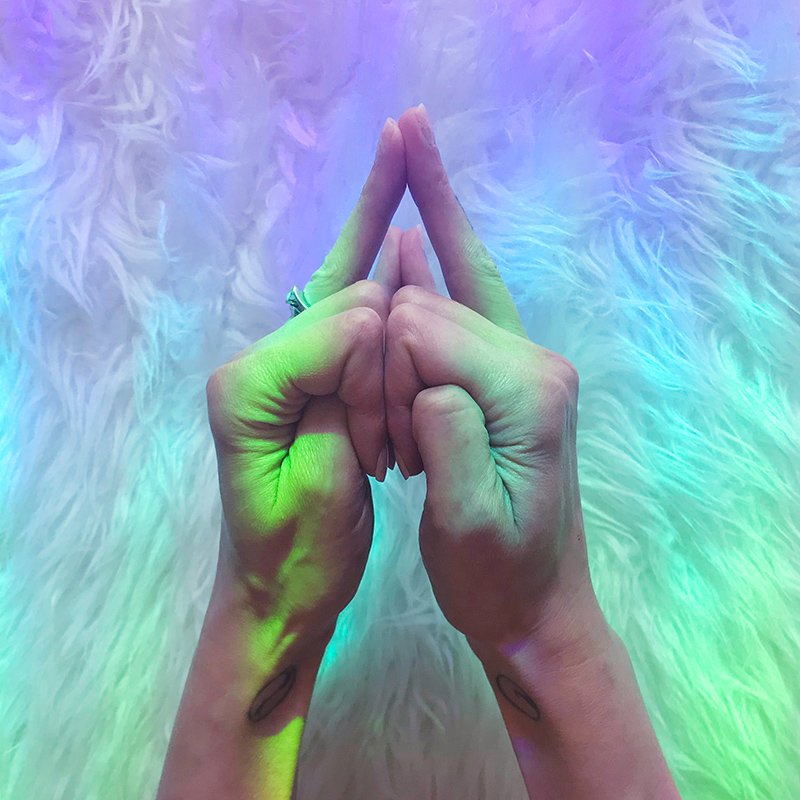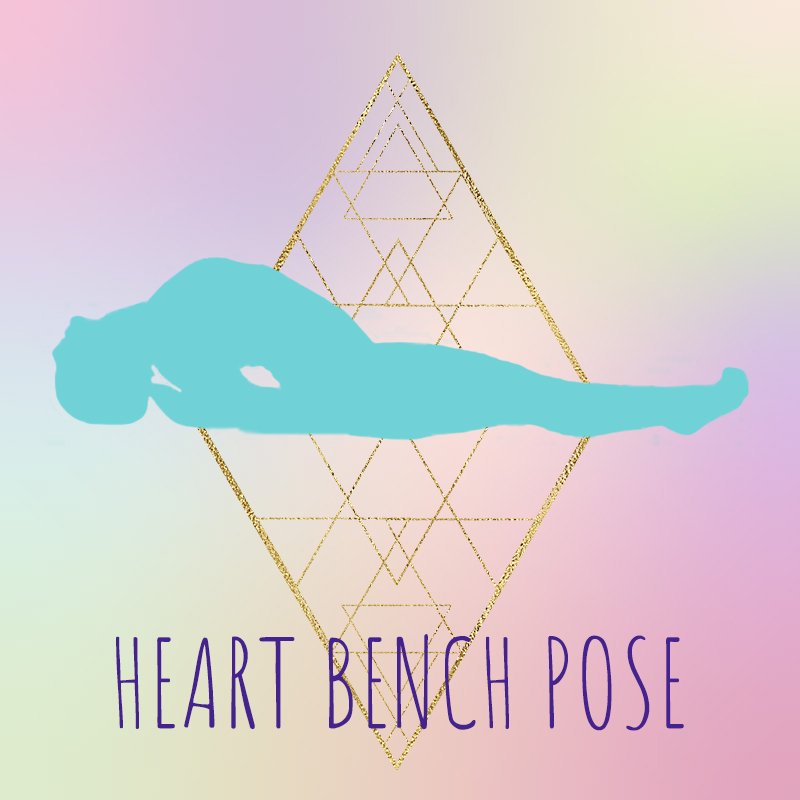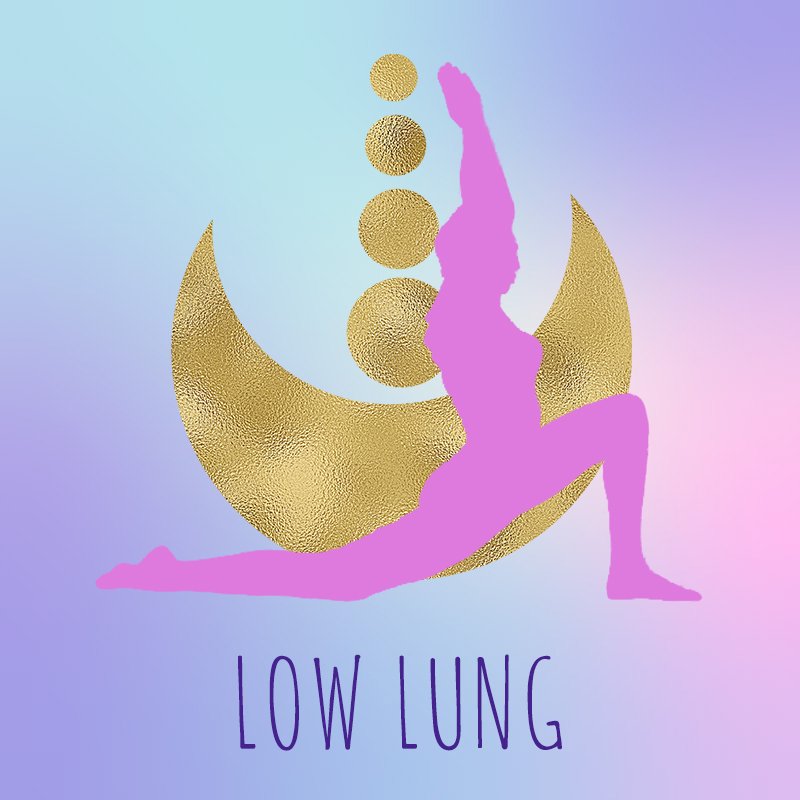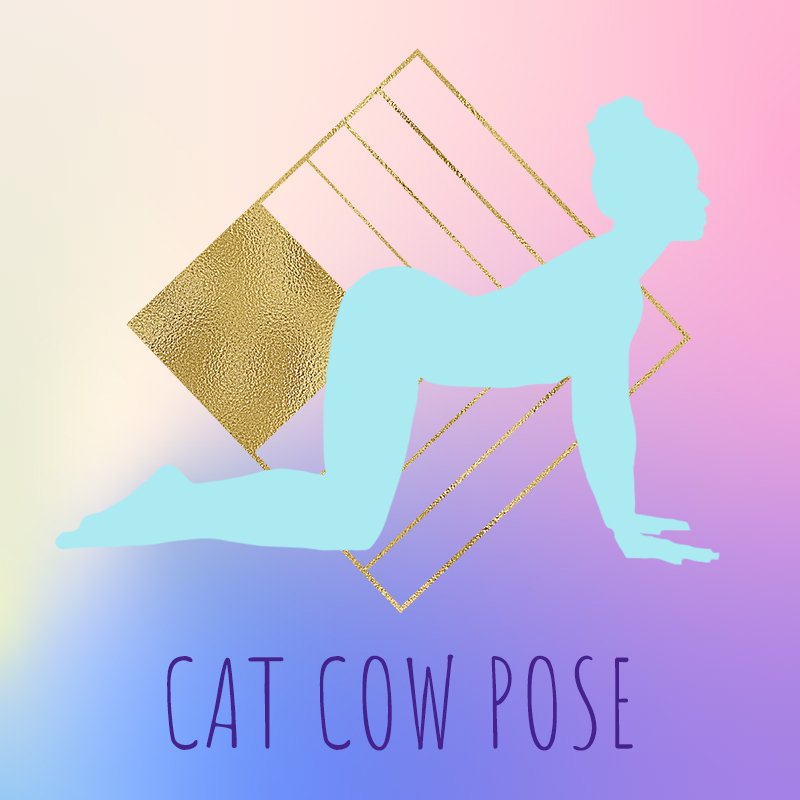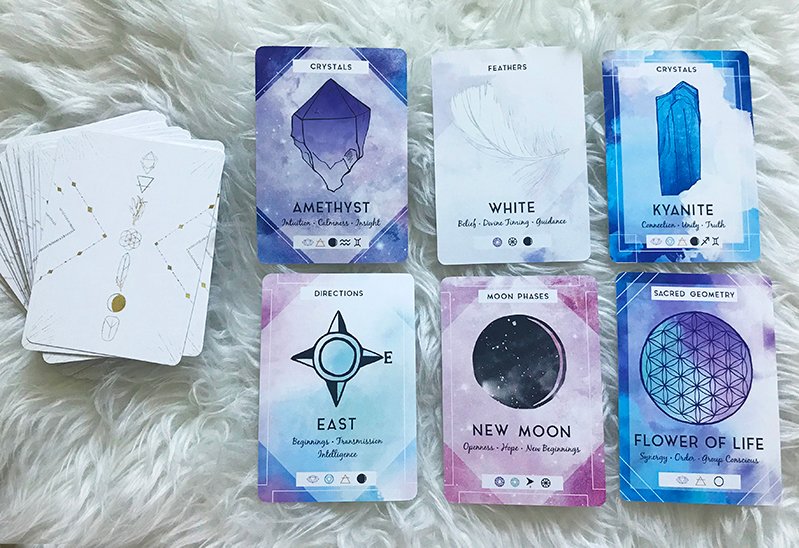The Akashic Field
If you’re reading this blog, there’s a good chance that you’ve accessed the Akashic field already and didn’t even realize it. Read through the questions below to see if you have.
If you’re reading this blog, there’s a good chance that you’ve accessed the Akashic field already and didn’t even realize it. Read through the questions below to see if you have.
Have you ever been somewhere for the first time and had a sense that you’ve been there before?
Have you ever given a talk or presentation and felt like the words flowed through you from outside of yourself?
Have you ever had a hunch about something that later came true?
Have you lost your sense of self and time while working on a creative project?
Have you had dreams or visions about yourself in a different life?
Have you ever felt destined for a specific career or life path?
Have you ever known the answer to something without knowing where the information came from?
If you answered “yes” to any of these questions, you’ve likely accessed the Akashic field. Keep reading to learn what this field is and why you might want to access it more often!Card featured from The Ritual Deck.
Card featured from The Ritual Deck.
What is The Akashic Field
You may have heard the term “Akashic Records” and have an image in your mind of a big bright library with angels and spirits buzzing around. The true meaning of Akasha is bigger than anything our human minds can truly comprehend, including a sparkling library.
Akasha is a Sanskrit word that translates to ether. I know, you’re probably thinking, “great, what the heck is ether?”. Ether, or Akasha, encompasses all things and thoughts; past, present, and all future probabilities. It’s where the universe was born and where it resides still. I like to think of Akasha as the brain of the Universe or God.
Everything about your current life, past lives, and future life probabilities are stored in the Akashic field. Something as all-inclusive as this is difficult for our human brains to understand and that is why the term “records” is often used. I feel that the name “Akashic field” is more accurate because it is not something outside of us that we go and visit, it is something all around us and inside of us that we can tune into.
If you prefer the term Akashic records, that’s ok! I only explain the differences so you can have a more complete understanding of the Akashic field without limiting its scope.
Let’s recap. Here’s a short list of what the Akashic field is:
Where every thought that was ever thought, word that was ever spoken, and action that was ever taken is stored.
Information on past lives, present lives, and all future probabilities are stored.
A frequency or vibration that can be tuned into to access.
Accessible to anyone
Why Access The Akashic Field?
Ever feel paralyzed by not knowing how to move forward in your life? Wouldn’t it be nice to know that you were on the right path? Accessing the Akashic field can give you a sense of peace and inner knowing that you’re on a path that is in alignment with your highest potential.As I said before, the Akashic field has all future probabilities, not all future answers. That’s because you have full autonomy over your life. You always have options, and there is no “wrong” answer, just different learning experiences.For example, if you’re deciding between living a life of eating Hot Pockets on your couch and watching Netflix 24/7 or pursuing your passion for becoming a nurse (with occasional Hot Pockets and Netflixing), you’ll likely gain more from the latter. Not to say that the Hot Pocket and Netflix situation wouldn’t be a learning experience, but, you’ll probably be happier, and undoubtedly be of service in a more fulfilling way as a nurse. By accessing the field, you could have an inner knowing that being a nurse would give you a more fulfilling life. This is a pretty extreme example, but I think you get the idea!Here’s a list of other reasons why you might like to access the Akashic field.
Learn from past life experiences.
Heal traumas from past life experiences that may be affecting you during this life.
Move through the world with more confidence and less doubt.
Understand what you’re here to learn or overcome.
Live life to your fullest potential.
Strengthen your intuition.
Connect with your higher self.
Feel more connected to other humans.
This information is accessible to anyone, and it doesn’t require a special prayer or chant to do so. You can find more about how to access the Akashic Field here.
Using the Cardinal Directions in Ritual
The cardinal directions, North, South, East, and West, can help you with more than navigation. Each direction holds a meaning of its own and corresponds to one of the four elements. There are both simple and complex ways of using the cardinal directions in ritual.A variety of cultures honor the cardinal directions. This article is looking at them from a Pagan and Wiccan perspective. The four directions are often used by Native Americans on the medicine wheel. Neither way is wrong or right, just different, and for different purposes.Read on for meanings and three ways to start using the cardinal directions in your magickal practices.
The cardinal directions, North, South, East, and West, can help you with more than navigation. Each direction holds a meaning of its own and corresponds to one of the four elements. There are both simple and complex ways of using the cardinal directions in ritual.
A variety of cultures honor the cardinal directions. This article is looking at them from a Pagan and Wiccan perspective. The four directions are often used by Native Americans on the medicine wheel. Neither way is wrong or right, just different, and for different purposes.
Read on for meanings and three ways to start using the cardinal directions in your magickal practices.
Connection to the Four Elements
Each direction corresponds to one of the four elements; understanding these connections can help you better understand the energy of each direction.
North corresponds to Earth
East corresponds to Air
South corresponds to Fire
West corresponds to Water
A quick note about these correspondences. The elemental correspondences can vary depending on your location, cultural background, or intuition. Catherine Beyer explains this in her article The Five Element Symbols of Fire, Water, Air, Earth, and Spirit.
The Golden Dawn originated in England, and the directional/elemental correspondences reflect a European perspective. To the south are the warmer climates, and thus is associated with fire. The Atlantic Ocean lies to the west. The north is cold and formidable, a land of the earth but sometimes not a lot else.
If these correspondences don’t feel right to you, that’s ok! For example, if you live in the Southern Hemisphere, you may find that the correspondences feel off. You can reassign the elements in a way that feels natural to you or is in better alignment with your cultural background.
Direction meanings
Here’s a more in-depth look at some meanings and correspondences of each direction.
North
Physical body
Health
Chakra: Root
Element: Earth
Color: Green
South
Hardships
Challenges
Willpower
Chakra: Solar Plexus
Element: Fire
Color: Red
Three ways to use the cardinal directions in ritual
1. Add a layer of meaning to your ritual
The easiest way to start implementing the cardinal directions into your magickal practice is by facing the direction that makes the most sense for what you’re doing. This idea can be applied to oracle and tarot card readings, candle magick, ritual, spellwork, meditation, or working with the moon.
Here are a few examples:
Face North if you’re doing a meditation focused on your health.
Face East if you’re performing a card reading for the new moon because the new moon represents new beginnings.
Face South if you’re asking your guides about how to overcome a problem.
Face West if you’re doing a ritual to help you let go of something.
2. Calling the quarters for protection
The next time you’re practicing a ritual or psychic work start by calling on the four directions, this is also referred to as “calling the quarters.” Calling the quarters will bring you protection and the energy of all of the elements during your practice. It’s also said to create a sacred space that is connected to the spirit realm.
There’s more than one way to call the quarters. A quick google search will offer you a variety of options, but here’s one way:
Imagine each direction as a wind that you’re invoking into your space. You can even imagine a specific Goddess or God for each direction. As you call in each direction, stand facing the direction you’re calling in and ask it to join you for your ritual practice. Many like to start by calling in the North winds first because it will keep your ritual grounded. Rotate in a circle, going through each direction, asking it to join you. When you’re done performing your ritual work, release the winds, and thank them for their assistance and protection.
3. Altar placement
Whether you’re creating a new altar or updating your current altar, the direction it’s facing will have an effect on it. Try to place your altar in a direction that matches the season of life you’re in or want to be in.
Has your altar or sacred space been in the same location for a long time? It might be a time to rearrange and face your altar in a direction that’s in better alignment with your life. Check the meanings for the directions above and note which one feels like where you’re at or want to be right now.
The Birthplace of Sacred Geometry // What is the Vesica Piscis?
The Vesica Piscis symbol is comprised of two overlapping circles that form an almond shape in the center, also called a “mandorla.” Though the coming together of these circles may look simple, and possibly remind you of fun times in middle school filling out Venn diagrams, its meaning is profoundly powerful.
The Vesica Piscis symbol is comprised of two overlapping circles that form an almond shape in the center, also called a “mandorla.” Though the coming together of these circles may look simple, and possibly remind you of fun times in middle school filling out Venn diagrams, its meaning is profoundly powerful.
Vesica Piscis translates to “bladder of the fish” in Latin, this not so flattering or mystical name was given to it due to its similar appearance to a fish bladder. The Italian phrase “mandorla,” or almond, refers to the shape created in the center.
Mathematically speaking, this simple shape is the starting place of very complex geometry. The circles have the same radius and intersect in such a way that the perimeter of each circle touches the center of the other. The almond shape created by the overlapping circles contains two equilateral triangles. For more on the mathematics of this shape, exciting as it may be, you’ll need to do your own research! From here on out I’ll be focusing on the significance, meaning, and uses of this sacred symbol.
Let’s dig into the significance of this symbol and even more important, how you can put it to use in your spiritual practice.
Where did it come from?
The Vesica Piscis was formed first in nature, but when it was first identified by humans as a significant shape is still up for debate. Beyond nature, this shape can be found in paintings of Christ and Buddha, modern-day logos like Coco Chanel, crop circles, and ancient and contemporary architecture. It is also the starting place of the Seed of Life and the Flower of Life. If you missed my blog on these two basic sacred geometry symbols, you could learn more about them here.
Like most sacred geometry, there’s a lot of speculation about the origin(s) and meaning(s) of the Vesica Piscis. Because this symbol is found in so many places, it’s hard to pinpoint where it originated. Many, myself included, believe this simple symbol found all throughout history and nature has a divine source.
What does it mean?
Because the Vesica Piscis symbol shows up so often in nature and human history there are varying meanings associated with it. One thing most people can agree on is that it is a significant symbol.
Some view the Vesica Piscis as a Christian symbol due to its similarities to the “Jesus fish.” It also mimics the shape of the female vagina and is therefore viewed as a symbol of femininity, birth, and sexuality.
From a spiritual viewpoint, if we recognize the circle on its own as Source Energy (God or Goddess, whichever you prefer), the Vesica Piscis represents creation or the “womb of The Universe.” Think of a single circle as a Source of Energy, adding a second circle represents the spark of creation when the universe is born. This idea is enforced by its similarities to the shape of the vagina, the starting place of birth on a human level. It is enforced again by the fact that it is the starting place of most sacred geometry.
This is why for many, the Vesica Piscis symbol is considered very sacred. On a spiritual level, it represents creation, birth, and the joining of spiritual and physical. Take this a step further, and without the Vesica Piscis, sacred geometry would not exist, and we would not exist.
How can you use this symbol?
Here are a few ways to bring this cosmic symbol into your practice and honor its sacred meaning.
Represent Goddess Energy
The almond shape of the Vesica Piscis mirrors the form of the female yoni. If you’re trying to call in more feminine energy or connect to Goddess energy place an image of or create the shape of the Vesica Piscis on your altar. Placing this symbol in an area you use often can uplift the space and bring in more feminine energy. Try enhancing the shape by adorning your space with other symbols and objects that represent femininity like a cowrie shell, carnelian, rose quartz, or roses.
Crystal Grid for Manifesting & Birth
Fortunately, the Vesica Piscis is a simple shape that lends itself to easy crystal gridding! Due to its simplicity, you may not need a diagram, but if you’d like one try drawing the shape or printing one online. I used a Seed of Life grid and formed the grid on one of the Vesica Piscis shapes within it, shown in the image below. Otherwise, arrange your crystals in an almond shape and add any crystal embellishments you desire.
Crystal grids that focus on new beginnings, birthing new projects, physical birth, or manifesting new things into existence are ideal, but not limited to, for the Vesica Piscis. Here’s a list of stones you could use for grids of this nature. Use the ones that best suit your needs and feel free to add more of your own!
Citrine for manifesting
Amethyst for connecting to Source Energy
Pyrite or tiger eye for luck
Green aventurine for abundance
Carnelian for femininity and physical birth
Clear quartz for amplifying
Connecting with Source Energy
Many believe that the two circles in the Vesica Piscis represent the physical world and the spiritual world, thus creating a portal from one to the other when they overlap to form the Vesica Piscis. If you’re trying to connect to the energy of the spirit world to become more enlightened or to improve your intuition, try meditating on this symbol as you work.
I hope you feel more connected to this powerful symbol and sacred geometry as a whole! Learn more about sacred geometry and find tools to create your own crystal grids in The Goddess Discovery Book.
10 Ways to Increase Your Shakti Energy
How is a society that’s stuck in the patriarchy able to find balance? The answer lies in you. The answer lies in one person at a time increasing their Shakti energy.I’m sure you’ve heard the term “Shakti” before but do you know how to tap into this creative life force that is the personification of feminine energy? I’m going to share what this term means with you, but more importantly, how you can increase your own Shakti to help our world find balance. First, let’s dive a little deeper into what and who Shakti is.
How is a society that’s stuck in the patriarchy able to find balance? The answer lies in you. The answer lies in one person at a time increasing their Shakti energy.
I’m sure you’ve heard the term “Shakti” before but do you know how to tap into this creative life force that is the personification of feminine energy? I’m going to share what this term means with you, but more importantly, how you can increase your own Shakti to help our world find balance. First, let’s dive a little deeper into what and who Shakti is.
What is Shakti
Shakti is life, death, rebirth, destruction, and creation. Shakti energy is the divine feminine force coursing through the cosmos and all aspects of our reality. She is the ultimate Goddess and the creative energy behind all Goddesses. Even though Shakti is a divine feminine force, it is present in all life forms, male and female, though it may be repressed in some. The balancing force to Shakti is Shiva or masculine energy.
Who is Shakti
Shakti is referred to as the “Mother Goddess” in Hinduism. She is the Goddess that guides all other Goddesses. Shakti is represented in the Hindu Goddesses Durga, Parvati, and Kali. Each Goddess utilizes Shakti energy differently and can be called upon for different purposes.
Kundalini Shakti
If you’re familiar with Kundalini energy, then you have probably heard the term Shakti used here as well. Kundalini Shakti refers to the idea that every being has Shakti energy coiled up at the base of their spine, waiting to be awakened. You may have already had a Kundalini awakening and not even known about it! That’s another blog post for a different day though!
Here are ten simple ways to increase your Shakti. Warning! Shakti energy is INTENSE. Be mindful of this as you practice the following suggestions. Build in some time to ground yourself after practicing any of these exercises and if it feels like too much, take a break for a few days.
10 Ways to Increase Your Shakti Energy
1. Activate your sacral chakra
Your sacral chakra is your hub of creativity and feminine energy. This chakra is located below your belly button and above your pubic bone. Imagine it glowing orange with each inhale and exhale to awaken it. Learn more about activating your sacral chakra in this blog post.
2. Tap into the water element
The water element represents femininity, so it’s the element to focus on to increase your Shakti energy. Let the water element wash over you, literally, by taking a soothing bath. Learn more about yoga poses for the water element here and ways to represent the water element here.
3. Meditate, meditate, meditate
Meditation in and of itself will help increase your Shakti energy (check out guided meditations here) but here’s a technique to give it an extra boost. Visualize your Shakti energy coiled up like a snake at the base of your spine. With each breath visualize this snake-like energy uncoiling and traveling through each chakra, lighting it up and cleansing it along its path. Continue until you reach the crown chakra. This meditation can be very intense and energizing, allow ample time to calm and ground yourself afterward.
4. Call on Kali, Durga, or Parvati
Remember the three Hindu Goddesses I mentioned above? Kali, Durga, and Parvati represent Shakti in Hinduism, calling on any of them can bring some extra Shakti into your life. Each Goddess will bring a different kind of energy. Parvati is a Goddess of love, Durga is a warrior Goddess, and Kali is the destroyer who ultimately brings balance. Learn more about connecting with Kali here. Goddess cards are from The Goddess Oracle.
Goddess cards are from The Goddess Oracle.
5. Follow the Moon
The moon has long been associated with divine Goddess energy due to its correlation with our menstrual cycles and the Triple Goddess. Try charting your cycle or journaling with the moon to connect to this moon energy. Learn more about the Triple Goddess symbol here and more about rituals for every moon phase here.
7. Get in touch with your shadow side
The imbalance of Shakti in our society is a direct reflection of our own imbalances. We so often focus only on our light, while directly under the surface our shadow side is seething. Take time to explore your light and dark to find balance within yourself. Learn more about shadow work here.
8. Practice the Shakti mudra
Guess what? There’s a mudra dedicated to Shakti! Try using this mudra during meditation or your yoga practice to increase your Shakti. Breathe deeply and focus on Shakti rising from the base of your spine.
9. Yoga asana practice
Let’s jump straight to the obvious here, Goddess pose. Remember when I said Kundalini aka Shakti energy is coiled at the base of your spine? Any pose that helps activate the base of your spine can help get your Shakti flowing, and Goddess pose certainly does this! Try to work different variations of this pose into your yoga practice or any postures that activate the sacral and root chakra.
10. Breathe Deep
Prana, your breath or life force, is Shakti. Any focused breathing can help increase your prana and therefore your Shakti energy. If you’re not familiar with any pranayama techniques, start with a three-part breath. Inhale, filling your lower belly with air first, then your middle section, and last your chest. Exhale in the reverse order. Practice this three-part breath 5-10 times and notice how you feel after you’re done. If you’re familiar with different pranayama techniques, try adding one into your practice daily. You can learn more about breathwork here.
You might find that you’re already practicing some of these things regularly. If you’re not, don’t stress! No need to start implementing all of them right away, in fact, I wouldn’t recommend it. Start small and start with the tips that sound most appealing to you. Learn more about your chakras system, the moon phases, and more in The Goddess Discovery Book.
Heart-opening Yoga practice & breathwork to cultivate self-love
Every February, we’re reminded of the love that already exists within us. While there are so many different kinds of love in our lives, it all starts with us: from a place of deep self-love. In this blog, I’ll be sharing a heart-opening yoga practice and a Kundalini breathwork meditation to help you cultivate self-love.
Every February, we’re reminded of the love that already exists within us. While there are so many different kinds of love in our lives, it all starts with us: from a place of deep self-love.
In this blog, I’ll be sharing a heart-opening yoga practice and a Kundalini breathwork meditation to help you cultivate self-love.
Kundalini Breathwork meditation
This Kundalini yoga breathwork meditation is said to help give strength to your heart and open up your heart center.
Find a comfortable seat and extend your arms straight out in front of you. You want them to be parallel to the mat with your palms facing down. Close your eyes and focus your inner gaze at the center of your chin. Start to take long, slow, deep breaths, holding your arms steady in front of you.
Hold this breathwork meditation for three minutes. Then, move into our asana practice below.
Yoga practice
This yoga practice is focused on heart-opening yoga poses because heart openers, like the name suggests, help balance and open your heart chakra. Your heart chakra is the center of giving and receiving love in your body. Opening this center helps open you up to a flow of unconditional love within and outside of yourself.
Heart bench
As someone with chronically tight shoulders, heart bench is my favorite restorative pose to start off a yoga practice. For this pose, you’ll need two yoga blocks. If you don’t have blocks, try getting creative with stacks of books or a rolled yoga mat under the shoulders.
You’ll take your first block at either its low or medium height and place it lengthwise along the spine between the shoulder blades, opening the heart. The second block will go under your head at whatever height supports a long neck and open throat.
Breathe into your heart space here, visualizing each inhale sending breath into the chest and each exhale softening, opening, and expanding your heart chakra. Stay here for 3-5 minutes, breathing deeply.
Half-pigeon variation
To transition out of your heart bench, lower all the way onto your back, bend your knees, and press your whole back into your mat. Feel your whole back grounding into the Earth, resetting the spine.
When you feel ready, cross your right ankle over the bottom of the left thigh (right under the knee). Then prop yourself up on your forearms and roll the shoulders back to open the heart as you energetically push your right knee away from you, stretching the hips. Spend a minute or two here, breathing deeply into the heart center, and then repeat on the other side.
Low lunge
Slowly find your way to downward-facing dog and pedal out the feet. When you feel ready, inhale to step your left leg forward. Lower the knee onto a mat or blanket, and create enough space in the hips so that you can really feel a stretch into your right hip flexor. Inhale to lift the arms overhead, bending back into a crescent lunge.
After a few breaths with this arm variation, stack your palms over your heart and breathe into your hands, keeping your back bending.
Stay here for ten more breaths, then repeat on the other side.
Mountain pose flow
From your lunge, step the back leg forward into a forward fold at the top of your mat. Hold opposite elbows to help pull your chest to your thighs and find a few breaths here.
When you feel complete, release your arms and inhale to a flat back, palms to shins or thighs. Exhale to fold forward. Inhale to roll all the way up to stand, reaching up and back. Exhale to fold all the way forward as you chant “YAM” (pronounced YUM), the bija mantra for the heart chakra.
Continue to flow with your breath for at least 10 complete cycles. Let yourself find a rhythm and find softness through the face, the knees, the heart, as you move.
Dancer’s pose
After your last exhale, hold in your favorite version of forward fold for a few more breaths. When you feel complete, inhale to roll up through your spine and find mountain pose with your arms at your sides.
Create a stable foundation by grounding down through your left foot, pressing into all four corners of the foot and through each of the toes. Bend your right knee and take the ankle into the right hand behind you. Inhale to lift your left arm over your head.
Feel free to stay here. If you’d like to go deeper, use your next exhale to slowly kick your right foot back and hinge forward at the hips, opening your heart and your right hip flexor. Stay here for at least 10 breaths. If you find yourself feeling unsteady or falling out of the pose, practice talking to yourself in a loving way and come back into the pose without judgment!
After ten breaths or whenever you feel ready, use an exhale to release everything back down and take the post to your other side.
Cobra pose or upward facing dog
From mountain pose at the top of your mat, fold forward, and step back to downward-facing dog. Inhale to shift forward to plank and exhale to either lower halfway or lower all the way onto the belly. Inhale to lift into cobra or upward facing dog. Stay here for a few breaths, rolling the shoulders back, pressing into the tops of the feet, and firming through the legs. After a few breaths, exhale to shift back to downward-facing dog.
Repeat this sequence one to three times, then stay in downward-facing dog for a few breaths.
Child’s pose
Inhale to lower your knees, and exhale to shift your hips back into your favorite variation of child’s pose. Let this child’s pose be a place of deep presence with yourself — with your breath, with any feelings or thoughts that are coming up to the surface. Practice speaking to yourself lovingly and tending to yourself with care. Stay here for about twenty breaths.
Cat/cow flow
From child’s pose, inhale to lift yourself into tabletop. Start to move through a cat/cow flow with your breath, using your inhale to lift your tailbone and open your heart, and your exhale to round through your spine and tuck your chin. Feel free to add in any other movements that feel good to you, like opening up through the sides of your body or incorporating hip circles.
Heart to Earth pose
When you feel complete in cat/cow, find your way back to a neutral spine. Start to walk your palms out in front of you, keeping your hips stacked over your knees, slowly lowering your chest and forehead all the way to your mat.
This intense pose invites us into a place of deep surrender. Keep your awareness on your breath, sending it into your heart space, and let yourself be with whatever comes up here. Stay here for at least 10 breaths, but feel free to stay longer if that feels right for you.
Bridge pose
Slowly shift back into tabletop and all the way onto your back, bending your knees and planting your feet on your mat. Inhale to slowly lift your hips and lift your arms all the way overhead, backs of palms touching down behind you. Breathe here in this bridge pose variation for 10 breaths, using an exhale to slowly lower your hips and arms back down.
Find a counterpose after you come down by walking your feet wider than hip’s distance and releasing your knees to rest in on each other. Place your palms on your belly and rest here for 5-10 breaths.
Reclining cobbler pose
Find your savasana in reclining cobbler’s pose, bringing the soles of your feet together. Rest one palm on your heart and one palm on your belly, letting yourself rest, relax, and integrate the benefits of your practice. Stay here as long as you like, but make sure you let yourself spend at least three minutes here.
Explore more blogs to help you cultivate self-love here:
4 Ways to Honor the Winter Solstice
The winter solstice marks the longest night of the year, and so we traditionally associate it with darkness.But it’s also the beginning of the waxing phase of the year, as the days start to get longer and nights start to get shorter. We are reminded that light always follows dark. The balance begins to shift, the wheel of the year turns back again.
The winter solstice marks the longest night of the year, and so we traditionally associate it with darkness.
But it’s also the beginning of the waxing phase of the year, as the days start to get longer and nights start to get shorter. We are reminded that light always follows dark. The balance begins to shift, the wheel of the year turns back again.
This sabbat, also known as Yule, is a time for us to connect with our darkness and alchemize it into lessons, into medicine, for the year to come.
Below are some ways to honor this sacred holiday.
Journaling prompts
Create a quiet, safe space (candles are recommended!) and let yourself free write to the questions below with no editing. No one’s going to read your answers but you!
Write a love letter to your darkness.
What am I most ashamed of? How can I transmute this shame into a source of power and love?
What part of me do I want to feed and grow?
Tarot or oracle spread
Pull out your tarot or oracle deck and set the intention for your highest self tospeak to you through the cards. Give them a shuffle, and pull a card for each of the questions below. I recommend writing down the spread and the cards you pull, as well as your interpretations of them.
What shadow wants to work with me?
How does it want to be worked with?
Advice for moving through shadow
What wants to be born from my darkness?
Advice for birthing whatever needs to come through
Message from my inner child at this time
Lay out the cards in two rows of three like so. The deck featured here is The Ritual Deck.
Create an altar
Creating an altar is a beautiful way to honor any sabbat. Let this be an intuitive, creative process and place anything there that feels good to you! Some ideas to spark your creativity are:
Your Death and Temperance tarot cards
A Yule log or branch
Holly or mistletoe
An evergreen wreath to symbolize the wheel of the year
Any red, green, or white crystals that you’d like (I love carnelian for red, selenite for white, and moss agate or malachite for green)
Ash, frankincense, and any other sun herbs you like
Pine cones
White and silver candles
A representation of something in your shadow that you’d like to honor and alchemize this year
Painting
One of my favorite ways to work with my subconscious these days is intuitive painting. Get out your paints, paper, and allow whatever wants to come through you as you focus on the winter solstice and what it means to you. Try not to focus on how it looks— no one needs to see it but you!
After you finish, you could place it on your altar.
Below is an infographic with a visual representation of rituals for Yule
Want to learn more about the different sabbats on the wheel of the year? Click here to learn more about the wheel of the year and download your free wheel of the year printable.


